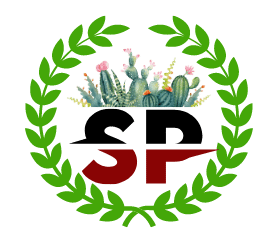Hoya Retusa is one of the Hoya species with unusual attractive leaf forms and cute little flowers. It is native to India and eastern Himalayas. It has a unique tender, thin cylindrical grass-like succulent leaves and ‘Retusa’ meaning it has a rounded leaf apex with a notch. It is a vining epiphytic plant with trailing habit. It grows in little clumps down long stems. The leaves grow in clusters on stems. On blooming, it produces many fragrant classic star-shaped flowers which grow creamy triangular petals with another contrasting red star shaped corona in the center. It may sometimes also produce seeds in certain conditions. It is an evergreen and perennial flowering plant semi-succulent in nature.

It prefers warm and humid climates. It is a tropical plant grown in places without extreme temperature fluctuations. It is preferred both for its foliar beauty and cute flowers. It is grown indoors in cool terrariums and cool places inside the house getting moderate indirect light.
Due to its trailing habit, the plant may require more space if not trimmed in time. The plant can grow about 15 to 20 inches in length while the leaves are about 3 to 5 inches long. It is not a fast grower but not slow either. It grows surprisingly in the growing season under a favourable environment. It is a semi-rare species found mostly in asian countries. It is a non-invasive species and known by other names like grass-leaved hoya, porcelain plant, wax plant. It is grown in USDA Growing zone 10 to 11.
It is not considered ideal for first time plant owners . It is difficult because of its sensitivity towards the temperature fluctuations and it can discourage the plant owners. However, one with a determined mindset and experience takes this plant as a challenge. The most unique part of this plant is its waxy flat grass-like leaves and its spectacular flowers. It’s a great cute little plant for a cool terrarium.
| Plant Name | Hoya retusa |
| Other Name | Grass-leaved Hoya |
| Origin | India And Eastern Himalayas |
| Growing Zone | USDA zone From 10 To 11 |
| Grown For | Foliage And Flower beauty |
| Plant Type | Trailing, Low-growing |
| Height | 3 to 5 inches |
| Width | 15 to 20 inches |
| Tolerance | Not tolerant towards high heat and direct sun exposure. |
| Toxicity | toxic to pets and humans. |
| Price | $ 15 to $ 32 |
Hoya Retusa Vs Linearis

Both Hoya retusa and Hoya linearis are from the Hoya family. Hoya linearis is rarer and a bit more high maintenance Hoya species compared to Hoya retusa. Retusa has narrow thin foliage with single flowers in a leaf having a lemon scent whereas Linearis have long fuzzy stems and foliage which produces white flowers clustered together. The linearis grows longer and requires more space than retusa. So, linearis is difficult to find because of its rare nature and high maintenance.
Is It Toxic?
Most of the Hoya species are pet and human safe. However, hoya retusa is toxic to pets and humans.
The milky latex present inside the leaves is toxic to pets and childrens. It may result in severe allergic reactions. You should seek advice from a vet consultant immediately if the leaves are found to be ingested by your pets.
Read More: Stone Lotus Flower: Care And Propagation
Hoya Retusa Care
Hoya retusa is still a high maintenance plant compared to other houseplants. So, it should be looked after carefully in order to maintain its beauty. It thrives in a cool humid environment. It’s not easy for an average person to keep this hoya, especially in the regular house during a dry winter.
Light
It likes bright indirect light. Places with less light do well for this Hoya.It is prone to sunburn on exposure to bright direct light. Thus, placing it in a west or south facing window sill or some inches away from the windows is fine for this plant. The bloom is regular when exposed to plenty of indirect light. It is mostly kept under grow light during winter.
Temperature
Being a tropical and himalayas native, it thrives in temperatures from 10 to 25 degrees celsius( 50 to 80 degrees Fahrenheit). Make sure to maintain consistent temperature without extreme fluctuations. If you give it a little bit cooler temperatures especially at night it’s more likely to go into bud and then bloom.
Soil: This Hoya grows well in well-aerated and quickly draining soil with neutral pH around 6-7 rich in organic matter content. There should be proper air circulation. The drainage can be improved by mixing cocopeat, perlite,etc in the dense soil. The soil should be completely dry in between waterings.
Water
The watering should be regularly done 2 to 3 times a week when the top 3 to 4 inches of soil becomes completely dry. A proper schedule should be prepared. The dryness of the soil can be measured by dipping the fingers inside the soil. Watering should be reduced during winter. Overwatering results in fungal attacks and root rot.
Fertiliser
This plant doesn’t require much fertilising. However, it is fertilised in this growing season from spring to fall in order to improve its bloom and promote prolific growth rate.
Humidity
Being native to tropical regions, a humid environment should be maintained in order to protect its leaf from yellowing. About 40 % moisture can be enough for its growth. However, humidity should be increased if the bloom is delayed or growth is stunted.
Potting And Repotting
It can be potted with organic well drained soil in a terracotta pot. This plant loves to be pot bound. It can be repotted once in every 2 to 3 years.
Training And Pruning
The vines if unchecked and the conditions are favourable can quickly grow around all kinds of different plants and it’s pretty hard to unwind it. So, regular pruning of unhealthy leaves should be done from time to time creating an admiring appearance.
Propagation

You can propagate this plant directly in soil or in water from stem cuttings. Let’s discuss both of these options briefly.
1. Propagation Directly Into Soil
- First, disinfect the cutter
- The most important stem is choosing the stem to cut. You can see little white nubs in the stems which are actually aerial roots and the plant can be easily propagated from it.
- Cut a stem with aerial roots from its node having at least one leaf cluster and put the cutting on the paper towel or in the water in order to drip out the milk from the stem. You can also keep the cuttings inside the refrigerator for a few minutes.
- Let the tip of the cuttings dry up a little bit.
- Now, prepare a loose, friable, porous well-draining potting mixture rich in organic matter content. Wash with fungicide if required.
- Choose a pot with a draining hole in terracotta and if not available make holes in your pot. Then, pour the potting mixture into it.
- Take the cutting, dip in root hormone and then basically just insert the whole stem into the potting mix with leaf clusters on the surface.
- Water it lightly and keep it in low light until new roots develop.
- After two weeks, take out the rooted cuttings and transfer it to other pots of required size if you’ve rooted many cuttings in a single pot.
- Slowly bring it to indirect light and start watering when the soil becomes dry.
2. Propagation In water
- Follow the similar process to prepare stem cuttings.
- Take a jar and fill it up with water a night before the propagation in order to let the ions and minerals precipitate down.
- Place the stem cuttings into the jar and keep it in a bright indirect light.
- Observe the roots and change the water every week.
- Transplant the cutting into soil in a new pot once it gets rooted.
Common Problems
1. Root Rot
It may be due to overwatering and improper drainage.
2. Pests
Look out for Aphids, scales, thrips, mealybugs and spider mites.
3. Yellowing of leaves
It occurs when the plant is overwatered or exposed to direct sunlight for a long period.
4.Wrinkling and dropping of leaves
It is a sign of stress from underwatering or root rot.
5. Stunted growth
The growth is highly affected when there are irregular temperature fluctuations.
6. Drying back of vines
Sometimes the vines become non-viable and will dieback in unfavourable conditions.
Hoya Retusa Yellowish Leaves
Yellowish leaves of Hoya retusa are signs of over watering or over exposure to sunlight. You should check for drainage of the pot and make sure to transfer the plant to place with indirect light if you see its leaves slowly yellowing. It prefers dry soil in between watering. So, make sure not to keep soil moist for too long.
Pros
- It has attractive waxy leaves producing fragrant flowers.
- It is easy to propagate.
- It has unique star-shaped flowers.
- It is common and low-maintenance compared to other Hoya species.
Cons
- It is not pets and children friendly.
- Special attention should be given to this plant.
- It gets easily affected by overwatering and overheating.
Price
It ranges from $15 to $32 in online purchasing platforms.
Final Verdict
It’s an unusual plant which is not recommended for beginners. I can recommend this plant if you like challenging yourself to complete the task. All the attention and care given to the plant feels worthy when it begins blooming and decorates your space with its attractive sweetly scented flowers.

